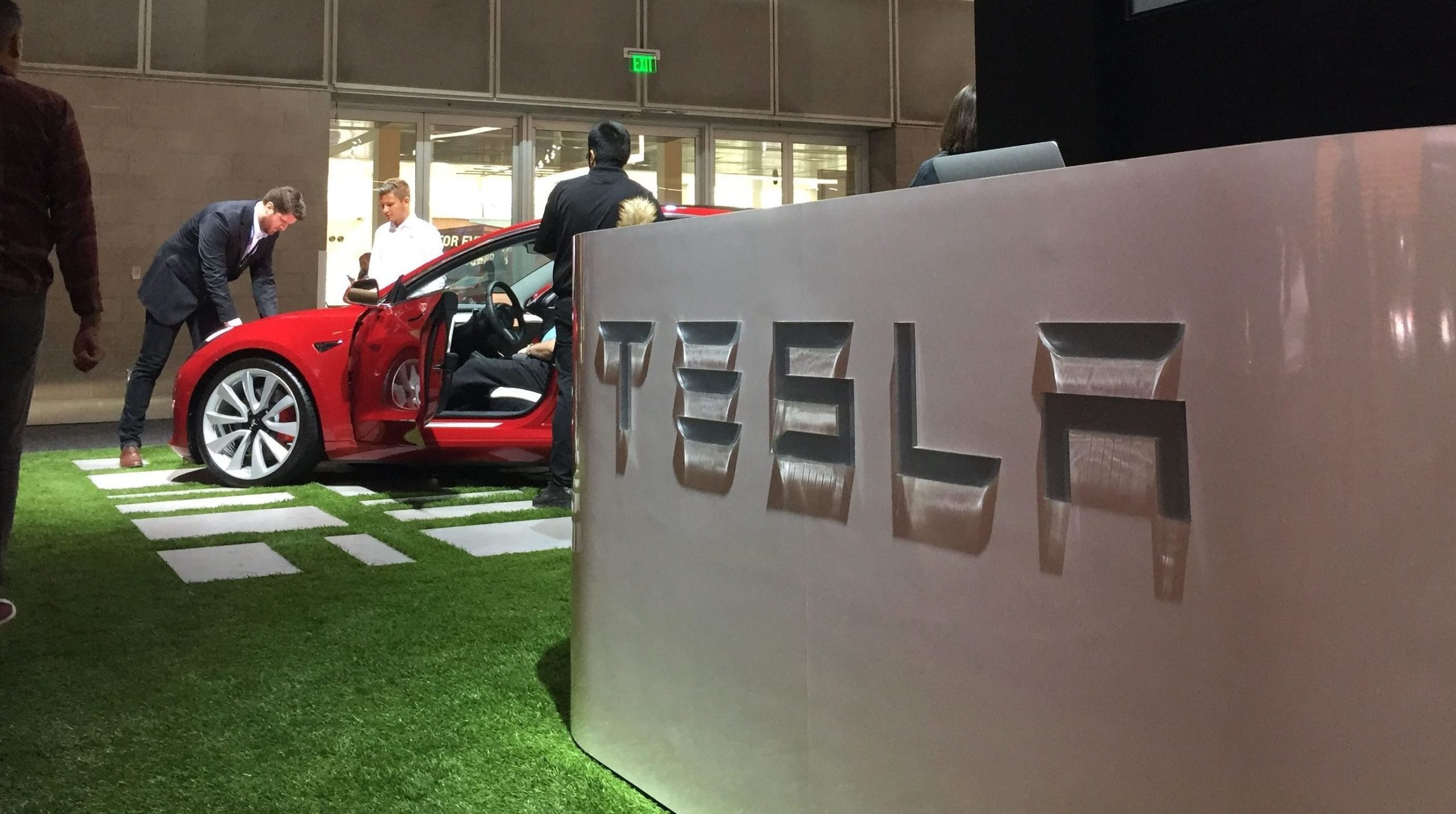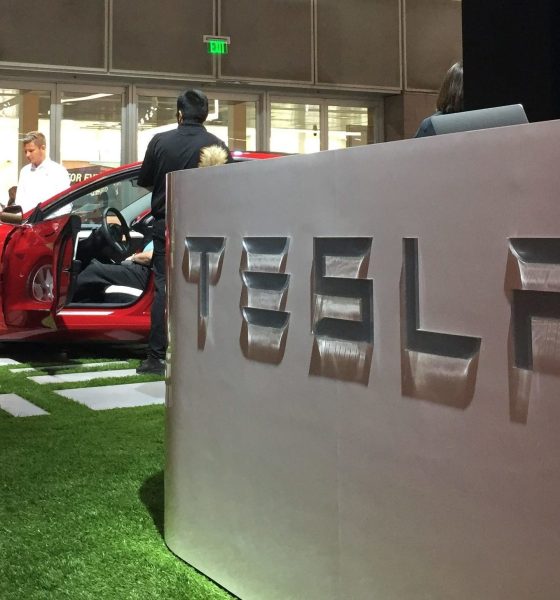

Investor's Corner
Tesla drops 4% and hits 2-year lows, but TSLA bulls remain undeterred
Tesla stock (NASDAQ:TSLA) dropped 4% on Friday as the electric car maker continued to feel the aftermath of its Q1 financial report. As Tesla hit 2-year lows, Wall Street continued to be polarized about the company, with bears piling on the skepticism and TSLA bulls remaining firm in their support for the electric car maker.
Seemingly smelling blood in the water, Tesla bears continued their attacks on the company. Gabe Hoffman, founder of Accipiter Capital Management and a Tesla short, called Elon Musk a “lying magician” during a segment of Yahoo Finance‘s The Ticker. Garrett Nelson, CFRA senior research analyst, noted that the company’s guidance looks “unrealistic” and a “problem going forward.” Longtime TSLA bull Dan Ives from Wedbush also wrote a scathing note following Tesla’s Q1 earnings call, describing the first quarter as a “top debacle.”
While the current state of Tesla stock does not inspire much confidence, some of the company’s bulls have remained supportive of the electric car maker. Jefferies analyst Philippe Houchois noted that while there is “ongoing stress,” for Tesla, he saw “enough positive surprises from auto gross margin resilience, cash earnings, and gross liquidity to argue the shares have sufficiently re-priced.” Houchois admitted that his current call might be “hard to live with at times,” but he maintained that he sees value in Tesla’s electric vehicle/connectivity technology and implementation.
Arguably taking an unpopular opinion, the Jefferies analyst stated that he remained confident that “there is a path to sustained profitability” for the electric car maker. Houchois ultimately kept his “Buy” rating on TSLA stock, as well as a very optimistic $400 price target.
ARK Invest CIO Cathie Wood, a long-term TSLA bull, discussed Tesla’s first quarter results in a segment of CNN‘s First Move. According to Wood, the electric car maker’s Q1 numbers might be provocative, but they are not really a surprise. “The numbers looked provocative. I will say that from the get-go. But we knew this was going to be a tough quarter. We knew they were retooling. We knew that they were going to pay back the convertible notes. So there’s going to be a cash drain. I don’t think there were too many surprises,” she said.
In a rather interesting twist, Craig Irwin of Roth Capital Partners, has turned less bearish on Tesla following the Q1 earnings call. Irwin is a Tesla critic, recently claiming that the electric car maker will be in trouble because of competition from legacy auto. In a segment on CNBC‘s Squawk Box, Irwin explained why he currently rates Tesla as a hold. “(The Q1 results were) very much as telegraphed. I mean, we’ve known the units for a while. Nothing gets me more constructive here, but frankly, I’m not more bearish. I just think that the probability of an equity offering or some capital access is much, much higher with the cash position down as much as it was,” he said.
With Friday’s 4% drop, TSLA shares have now fallen 29% in 2019. Tesla’s market cap has also declined from $63 billion in mid-December to $40.8 billion. Wall Street analysts currently expect the electric car maker’s revenue to expand 19% in 2019, far less than the 83% growth it exhibited in 2018 and the 68% growth in 2017, according to Refinitiv.
As of writing, Tesla stock is trading 4.77% at $235.81.
Disclosure: I have no ownership in shares of TSLA and have no plans to initiate any positions within 72 hours.

Investor's Corner
Tesla stock closes at all-time high on heels of Robotaxi progress

Tesla stock (NASDAQ: TSLA) closed at an all-time high on Tuesday, jumping over 3 percent during the day and finishing at $489.88.
The price beats the previous record close, which was $479.86.
Shares have had a crazy year, dipping more than 40 percent from the start of the year. The stock then started to recover once again around late April, when its price started to climb back up from the low $200 level.
This week, Tesla started to climb toward its highest levels ever, as it was revealed on Sunday that the company was testing driverless Robotaxis in Austin. The spike in value pushed the company’s valuation to $1.63 trillion.
Tesla Robotaxi goes driverless as Musk confirms Safety Monitor removal testing
It is the seventh-most valuable company on the market currently, trailing Nvidia, Apple, Alphabet (Google), Microsoft, Amazon, and Meta.
Shares closed up $14.57 today, up over 3 percent.
The stock has gone through a lot this year, as previously mentioned. Shares tumbled in Q1 due to CEO Elon Musk’s involvement with the Department of Government Efficiency (DOGE), which pulled his attention away from his companies and left a major overhang on their valuations.
However, things started to rebound halfway through the year, and as the government started to phase out the $7,500 tax credit, demand spiked as consumers tried to take advantage of it.
Q3 deliveries were the highest in company history, and Tesla responded to the loss of the tax credit with the launch of the Model 3 and Model Y Standard.
Additionally, analysts have announced high expectations this week for the company on Wall Street as Robotaxi continues to be the focus. With autonomy within Tesla’s sights, things are moving in the direction of Robotaxi being a major catalyst for growth on the Street in the coming year.
Elon Musk
Tesla needs to come through on this one Robotaxi metric, analyst says
“We think the key focus from here will be how fast Tesla can scale driverless operations (including if Tesla’s approach to software/hardware allows it to scale significantly faster than competitors, as the company has argued), and on profitability.”

Tesla needs to come through on this one Robotaxi metric, Mark Delaney of Goldman Sachs says.
Tesla is in the process of rolling out its Robotaxi platform to areas outside of Austin and the California Bay Area. It has plans to launch in five additional cities, including Houston, Dallas, Miami, Las Vegas, and Phoenix.
However, the company’s expansion is not what the focus needs to be, according to Delaney. It’s the speed of deployment.
The analyst said:
“We think the key focus from here will be how fast Tesla can scale driverless operations (including if Tesla’s approach to software/hardware allows it to scale significantly faster than competitors, as the company has argued), and on profitability.”
Profitability will come as the Robotaxi fleet expands. Making that money will be dependent on when Tesla can initiate rides in more areas, giving more customers access to the program.
There are some additional things that the company needs to make happen ahead of the major Robotaxi expansion, one of those things is launching driverless rides in Austin, the first city in which it launched the program.
This week, Tesla started testing driverless Robotaxi rides in Austin, as two different Model Y units were spotted with no occupants, a huge step in the company’s plans for the ride-sharing platform.
Tesla Robotaxi goes driverless as Musk confirms Safety Monitor removal testing
CEO Elon Musk has been hoping to remove Safety Monitors from Robotaxis in Austin for several months, first mentioning the plan to have them out by the end of 2025 in September. He confirmed on Sunday that Tesla had officially removed vehicle occupants and started testing truly unsupervised rides.
Although Safety Monitors in Austin have been sitting in the passenger’s seat, they have still had the ability to override things in case of an emergency. After all, the ultimate goal was safety and avoiding any accidents or injuries.
Goldman Sachs reiterated its ‘Neutral’ rating and its $400 price target. Delaney said, “Tesla is making progress with its autonomous technology,” and recent developments make it evident that this is true.
Investor's Corner
Tesla gets bold Robotaxi prediction from Wall Street firm
Last week, Andrew Percoco took over Tesla analysis for Morgan Stanley from Adam Jonas, who covered the stock for years. Percoco seems to be less optimistic and bullish on Tesla shares, while still being fair and balanced in his analysis.

Tesla (NASDAQ: TSLA) received a bold Robotaxi prediction from Morgan Stanley, which anticipates a dramatic increase in the size of the company’s autonomous ride-hailing suite in the coming years.
Last week, Andrew Percoco took over Tesla analysis for Morgan Stanley from Adam Jonas, who covered the stock for years. Percoco seems to be less optimistic and bullish on Tesla shares, while still being fair and balanced in his analysis.
Percoco dug into the Robotaxi fleet and its expansion in the coming years in his latest note, released on Tuesday. The firm expects Tesla to increase the Robotaxi fleet size to 1,000 vehicles in 2026. However, that’s small-scale compared to what they expect from Tesla in a decade.
Tesla expands Robotaxi app access once again, this time on a global scale
By 2035, Morgan Stanley believes there will be one million Robotaxis on the road across multiple cities, a major jump and a considerable fleet size. We assume this means the fleet of vehicles Tesla will operate internally, and not including passenger-owned vehicles that could be added through software updates.
He also listed three specific catalysts that investors should pay attention to, as these will represent the company being on track to achieve its Robotaxi dreams:
- Opening Robotaxi to the public without a Safety Monitor. Timing is unclear, but it appears that Tesla is getting closer by the day.
- Improvement in safety metrics without the Safety Monitor. Tesla’s ability to improve its safety metrics as it scales miles driven without the Safety Monitor is imperative as it looks to scale in new states and cities in 2026.
- Cybercab start of production, targeted for April 2026. Tesla’s Cybercab is a purpose-built vehicle (no steering wheel or pedals, only two seats) that is expected to be produced through its state-of-the-art unboxed manufacturing process, offering further cost reductions and thus accelerating adoption over time.
Robotaxi stands to be one of Tesla’s most significant revenue contributors, especially as the company plans to continue expanding its ride-hailing service across the world in the coming years.
Its current deployment strategy is controlled and conservative to avoid any drastic and potentially program-ruining incidents.
So far, the program, which is active in Austin and the California Bay Area, has been widely successful.








